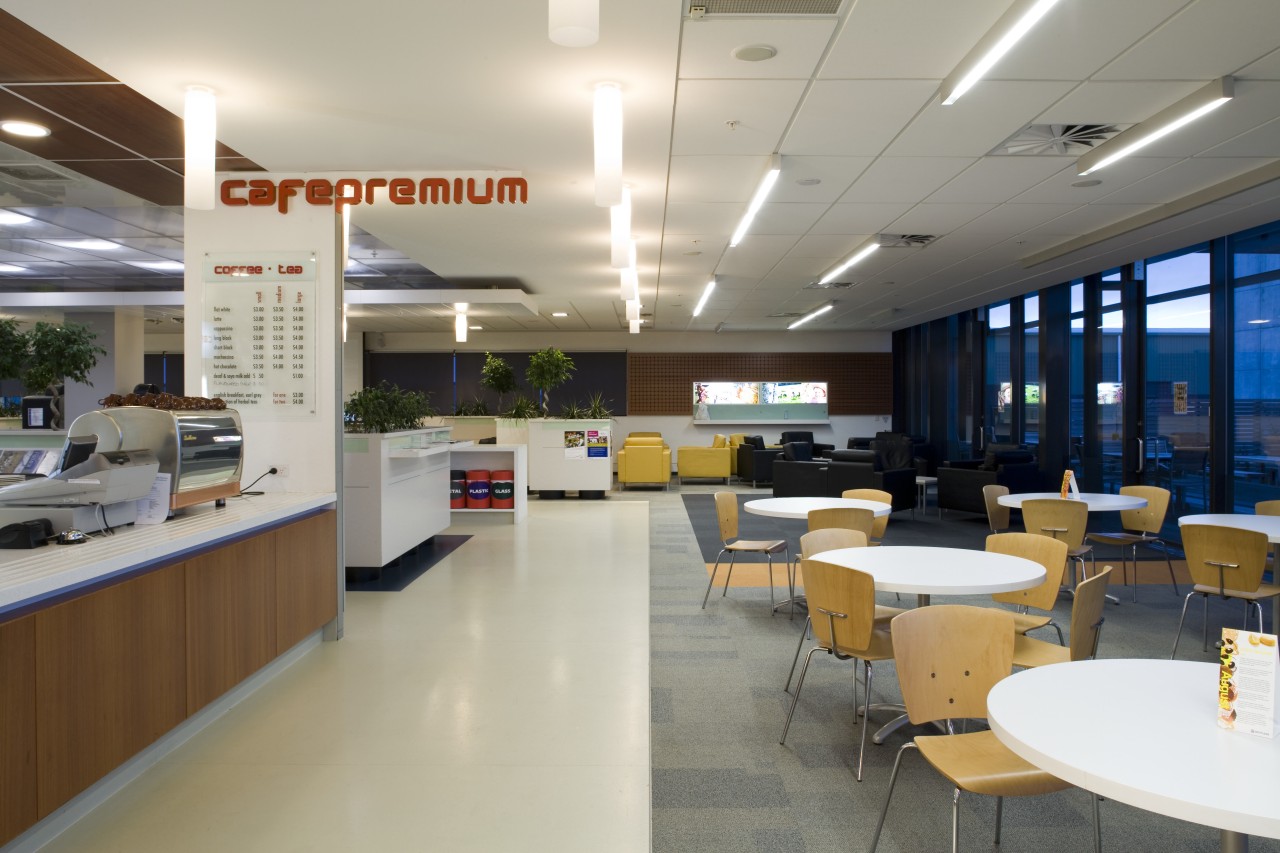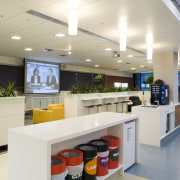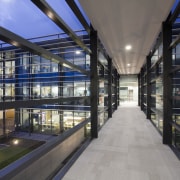future perfect
From its strategic design footprint to high-performance rooftop solar water heating, the new IAG Centre in Christchurch is the embodiment of far-sighted building design

Sustainability will continue to be a buzz word in commercial architecture as long as the world's resources remain finite, and continue to shrink. So that could be a while. Ways we can minimise our construction carbon footprint are diverse and numerous. Everything from paring back a building's drain on the national grid to ensuring the layout will retain its relevance to tenants in future decades might be considered by a resource-minded, eco-friendly developer.
Christchurch's new IAG Centre, from Henshaw Developments, combines several elements that will minimise impact on the planet and at the same time provide long-term returns for the developer.
The principal tenant and a driver behind the design, IAG needed a space that would gather together its 500-plus Christchurch-based staff. IAG had a dual agenda for their tenancy. They wanted an expansive, strong-looking design to promote company and inter-team culture, and at the same time sustainability and attendant power savings were key focuses.
The office complex was designed by Wilson and Hill Architects, with project architect Chris Wilson at the helm. Pelorus Architecture undertook the centre's interior design. Sustainability helped shape the IAG Centre's design, its fit-out, and even initial footprint on the land, says Wilson.
"While sustainability is growing fast in the world's consciousness, elements such as energy-saving technology and low-emission, replaceable materials can still be costly to achieve," says Wilson. "But as time goes by, advantages outstrip initial construction costs, a down-the-track drawcard for the owner and any future, like-minded tenants."
The centre comprises two three-level buildings, connected on upper levels by a skybridge. Concrete slab floorplates in each building connect seamlessly across the concrete-based skybridge. This effectively achieves massive flowing tracts of floor space across these levels but in a design that could compartmentalise the buildings to suit other tenants in distant years to come.
"Constructed largely in concrete and glass, both eminently renewable, zero-emission resources, the IAG Centre's two almost identical structures are long and narrow," says Wilson. "The buildings present walls of glazing along the longer faces and are both bookended in sheer concrete faces. These, together with external steel columns rising over the three levels, give the buildings a look of strength and solidity."
Concrete has a high thermal mass, and is a poor conductor of heat. When used in conjunction with argon-filled double-glazing, E-rated glass and ample wall and ceiling insulation, it creates building envelopes that minimise heat loss or heat gain. This passive containment of temperature ensures the high-tech variable refrigerant volume (VRV) air conditioning units specified for the complex work on minimal power, thus obtaining optimum efficiency.
The centre's elongated designs also allow for maximum daylight penetration into the building envelope across the narrow 20m-wide floorplates. Sensors around the perimeter dim the lighting or turn it off altogether, depending on the light conditions outside, and energy-efficient fluorescent light fittings are used throughout. To maximise the benefits of natural light, all staff workspaces and refreshment areas are near exterior windows.
With so much light penetration, heat containment was also needed. Fixed solar shading is angled to optimum effect on the various facades, most steeply on the western face to lessen the impact of late-afternoon sun.
On the roof, the sun's rays are harnessed instead of blocked, with solar water heating panels absorbing warmth to feed the building's hot water systems.
Heating and air conditioning in the building's individual workspaces can be adjusted to suit the season, preventing electricity waste from excessively low or high temperatures. Movement sensors in meeting rooms and service areas turn the building's eco-friendly lights off when they're not in use.
Every aspect of the IAG Centre was considered in terms of energy saving and recyclability. Stairwells are placed prominently in the office space, tempting staff to use more shoe leather and less electricity en route to their desks. Rainwater harvested from the roof feeds a water feature that greets visitors to the complex.
"Together with energy efficiency, the principal tenant wanted the building to engender a sense of camaraderie, drawing together the 500-strong staff who had previously worked at two separate venues," says Wilson. "While there are distinct brands within the IAG structure, the open-plan floorplates encourage day-to-day interaction between all staff.
"Locating one expansive communal cafeteria on the ground floor, complete with several breakout areas, was central to the idea of providing all staff members with common ground."
IAG's two tenant preoccupations of sustainability and company solidarity also run together. A range of recycle bins are found in nearly every room of the IAG Centre, meaning the entire staff participates in the building's eco-friendly ethos of recycling and sustainability.
Credit list
Developer
Interior design
Structural and civil engineer
Electrical engineer
Earthworks
Landscaping
Cranage
Hardware
Cladding
Ceiling
Solar panelling
Elevators
Architect
Construction company
Mechanical engineer
Quantity surveyor
Landscaping design
Fire consultant
Roofing
Columns
Glazing
Paints and varnishes
Bathroomware
Security system
Fire
Story by: Trendsideas
Home kitchen bathroom commercial design
Diving into nature
Personality plus
Classic looks, contemporary efficiency











